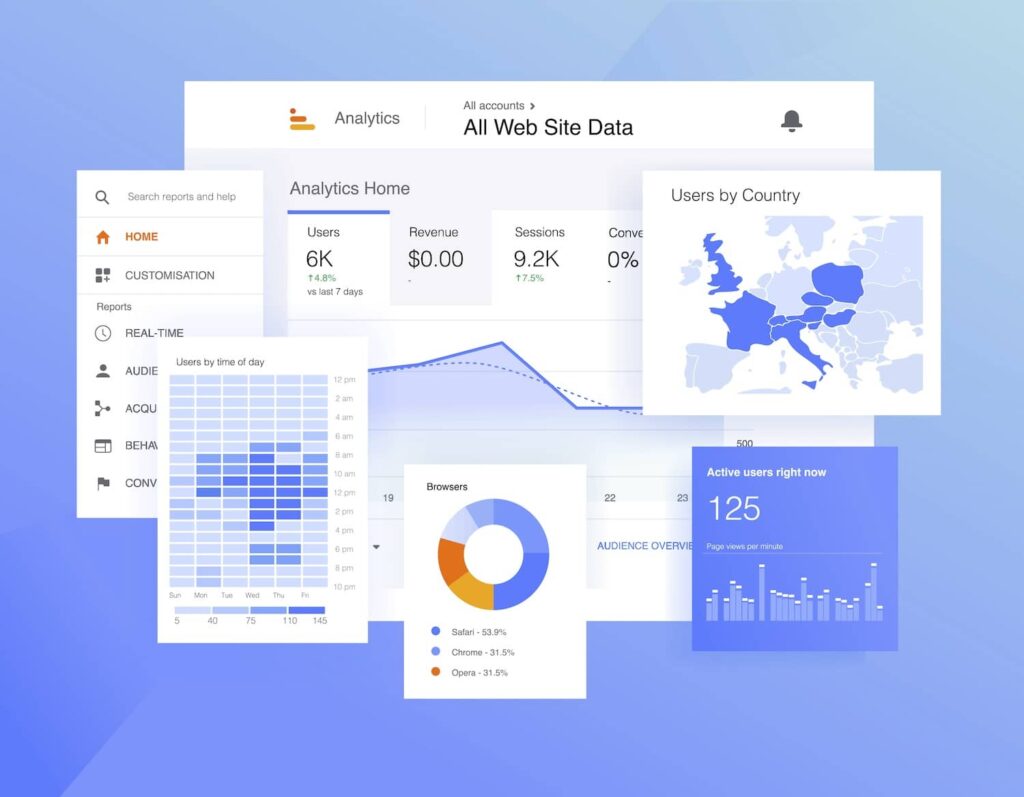The Role of Secondary Dimensions in Google Analytics: Interpretation and Insights for Advanced Data Analysis
The Role of Secondary Dimensions in Google Analytics: Interpretation and Insights for Advanced Data Analysis
Blog Article
Maximizing Your Information Interpretation With Second Measurement in Google Analytics for Informed Decision-Making
Google Analytics, an effective tool in the hands of electronic online marketers and analysts, uses an attribute understood as Second Dimension. By touching right into the capacities of Secondary Measurement, individuals can gain a more extensive view of their information, allowing them to make calculated decisions based on a much more thorough and nuanced evaluation.
Understanding Secondary Measurement Performance
Comprehending the second dimension functionality in Google Analytics enhances the depth of data evaluation by supplying added context to primary metrics. By integrating a secondary measurement, experts can sector and contrast information, getting understandings that would certainly otherwise remain hidden. This function permits individuals to watch data through different lenses, such as the source of web traffic, customer actions, or geographical location, offering a much more detailed understanding of internet site performance.
When looking only at main metrics,Utilizing additional dimensions can reveal patterns and correlations that might not be evident. For example, combining the key metric of web page views with a second measurement like gadget group can uncover whether particular devices drive even more traffic to details web pages. This information can after that notify site optimization approaches tailored to various device users.
Executing Secondary Dimension in Reports
Building upon the understandings gained with second dimension evaluation, integrating these measurements efficiently right into records in Google Analytics is important for extracting actionable data-driven choices. what is a secondary dimension in google analytics. By implementing second measurements in reports, users can delve much deeper into the performance metrics of their web site or app. This function enables for a more thorough evaluation by providing additional context to the key measurement selected
To carry out a second dimension in records, simply navigate to the desired report in Google Analytics and click on the "Additional dimension" tab located over the data table. From there, users can pick from a vast array of secondary measurements such as 'Source/Medium', 'Tool Category', or 'Touchdown Page'. Selecting one of the most appropriate second dimension will depend on the details insights you are seeking to uncover.
Utilizing second dimensions in reports not only improves the deepness of evaluation yet additionally aids in recognizing fads, patterns, and correlations that may have or else gone unnoticed. This strategic method to information analysis enables businesses to make educated choices that drive development and success.

Studying Information With Additional Dimensions
Upon integrating additional measurements right into information analysis within Google Analytics, a detailed assessment of essential performance indicators can be accomplished, supplying important insights for critical decision-making. By using second dimensions, analysts can better dissect their key information measurements, such as traffic sources or user demographics, to reveal patterns or fads that may not be immediately noticeable. This deeper level of analysis enables an extra detailed understanding of user habits and communications on a site or digital platform.
Examining data with additional dimensions allows marketing experts and internet site owners to address even more particular inquiries about their audience, material performance, and advertising and marketing efforts. For circumstances, by combining the main measurement of website traffic resources with see here a second dimension like geographical area, organizations can determine which areas drive the most valuable traffic to their website. This sort of granular understanding can notify advertising strategies, material production, and internet site optimization efforts to better deal with the demands and preferences of their target audience.
Leveraging Secondary Measurements for Insights
By including additional dimensions properly, experts can remove much deeper insights from data embed in Google Analytics, enhancing the understanding of customer actions and performance metrics. Leveraging secondary measurements entails incorporating various characteristics or metrics with main information to reveal patterns and fads that may not appear in the beginning glance. For instance, by adding a second dimension such as 'Device Category' to a record on site traffic, analysts can determine whether individual behavior varies throughout various gadgets like desktop computers, cellphones, or tablets.
Additionally, using additional dimensions permits analysts to section data extra granularly, enabling them to recognize specific target market sections or geographical areas that exhibit unique actions. what is a secondary dimension in google analytics. This division can be crucial in tailoring advertising methods, optimizing web site web content, or improving customer experience based upon the one-of-a-kind qualities of each sector
Fundamentally, leveraging second measurements in Google Analytics empowers experts to delve deeper into information, obtain purposeful understandings, and make educated choices that drive company development and success.
Enhancing Decision-Making Through Second Measurements
Making use of second measurements in information evaluation offers a calculated benefit by uncovering actionable insights that drive educated decision-making in Google Analytics. By boosting decision-making via additional measurements, users can dig deeper into their information to remove valuable info that may not be immediately obvious. These added dimensions supply an even more comprehensive view of individual behavior, communications, and end results, allowing analysts to make even more informed choices based on concrete data.
With the utilization of check it out second measurements, analysts can segment and filter information to determine patterns, fads, and relationships that may affect decision-making procedures. This enhanced degree of granularity enables a more targeted method to examining information, causing more informative and accurate verdicts.
In addition, additional measurements supply the possibility to contrast different information points alongside, helping with a much more comprehensive analysis of efficiency metrics and KPIs. By leveraging second dimensions efficiently, services can enhance their techniques, improve user experiences, and ultimately achieve their goals with self-confidence.
Conclusion

Building upon the understandings gained via secondary measurement analysis, integrating these dimensions successfully right into reports in Google Analytics is crucial for drawing out workable data-driven decisions.To implement a second measurement in reports, simply navigate to the preferred report in Google Analytics and click on the "Second dimension" tab located above the data table. By making use of secondary dimensions, experts can additionally study their key data measurements, such as website traffic sources or customer demographics, to reveal patterns or trends that may not be promptly noticeable. By integrating the main measurement of website traffic sources with a second dimension like geographical location, organizations can identify which regions drive the most important web traffic to their site.By including secondary measurements her response successfully, experts can remove much deeper insights from information collections in Google Analytics, boosting the understanding of individual habits and efficiency metrics.
Report this page